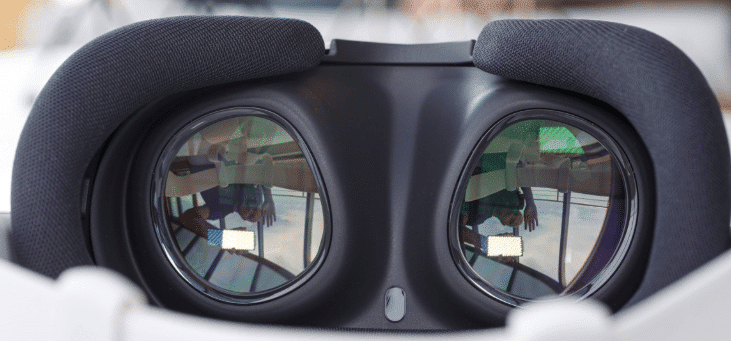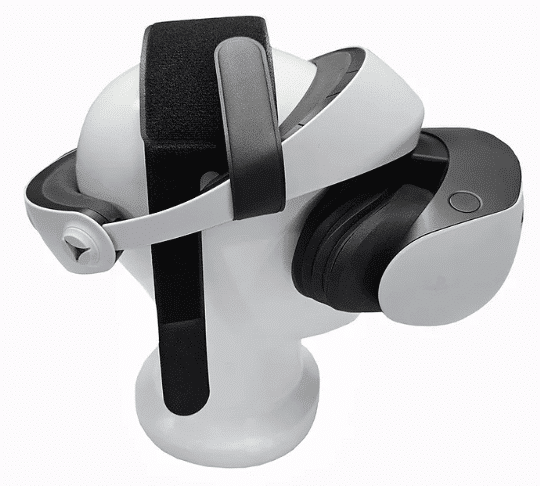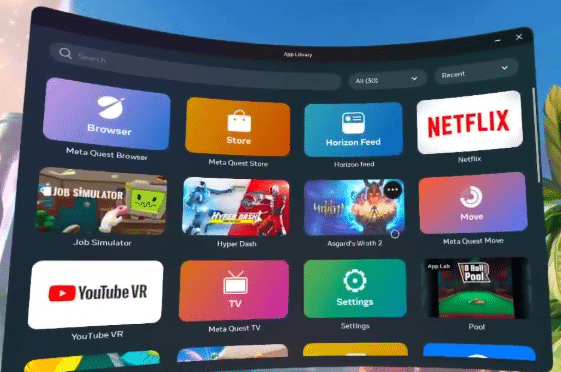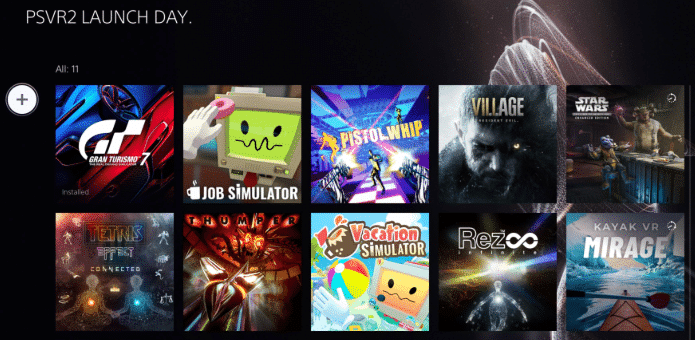In this Meta Quest 3s vs PlayStation VR2 guide, I will help you decide whether you should buy Meta’s new budget headset or Sony’s console VR headset option.
I’ll compare key details, such as the design, games, controllers, and other unique features that each headset offers.
If you recently made this choice, comment below and let me know which VR headset you picked!
Quick Summary
- The Meta Quest 3s is a standalone VR headset that works without any external console and offers full portability, while the PSVR2 must be tethered to a PS5 console for use. This makes the Quest 3s more versatile and cheaper overall.
- Both headsets offer similar display quality (around 2000×2040 resolution per eye and 120Hz refresh rate), but the PSVR2 uses OLED screens for better contrast while the Quest 3s uses LCD panels.
- The PSVR2 has more advanced features like eye tracking and haptic feedback in its controllers, though the Quest 3s offers superior mixed reality capabilities.
- The Quest 3s has a much larger game library since it’s compatible with all other Meta VR games (for the Quest 2, for example), while the PSVR2 focuses on high-end PlayStation exclusive titles. Both VR headsets can connect to your PC and play Steam VR titles.
How to Buy the Meta Quest 3s and Playstation VR2

Both VR headsets can be purchased worldwide off of Amazon or from the official Meta and Sony stores. Use the links below to get your headset today.
Meta Quest 3s
Playstation VR2
Meta Quest 3s vs PSVR2 Design and Portability
The Meta Quest 3s and PSVR2 take two very different approaches regarding design and portability. The Quest 3s is an all-in-one virtual reality headset, with everything built in and no external console required. This makes it a great standalone device and easy to toss in a bag for on-the-go VR.
On the other hand, the PSVR2 is tethered to a PlayStation 5 console with a single wire, limiting it to home use only.
When it comes to a VR headset, comfort plays a big role. The Quest 3s is lighter, making it better suited for longer sessions without feeling as heavy on your face. However, its default Velcro head strap can feel basic and less secure compared to the PSVR2’s halo-style headband, which offers a more balanced fit but can add bulk.
Winner: If your main priority is freedom and portability, the Quest 3s is the clear winner, while the PSVR2’s premium design focuses more on immersive, stationary gaming.
Quest 3s vs PlayStation VR2 Display Technology
The Meta Quest 3s and PSVR2 both deliver impressive visuals but take different approaches to display technology. The Quest 3s boasts a higher resolution of 1832 x 1920 per eye, slightly less than the PSVR2’s 2000 x 2040 per eye.
Sony’s headset counters this with OLED screens, known for deeper blacks and richer contrast, while the Quest 3s uses an LCD panel, which can appear brighter but lacks the same color depth. The trade-off is small between the two headsets, so this comes down to personal preference, as it’s not a big deal.
Lens technology also differs between the two. The Quest 3s uses modern pancake lenses, which help reduce distortion and create a clearer image compared to the PSVR2’s fresnel lenses, which can suffer from glare and “god rays” but are still capable of great visuals. Both headsets offer a similar field of view around 100 degrees and share a 120Hz refresh rate for smooth gameplay.
Winner: PlayStation VR2
Quest 3s vs PlayStation VR2 Immersion and Tracking
For immersion and tracking, the PSVR2 and Meta Quest 3s shine differently. The PSVR2 has a major advantage with eye tracking technology, as it has foveated rendering enabled, which sharpens the area you’re directly looking at while reducing detail in peripheral vision to boost performance.
The Meta Quest 3s lacks eye tracking but makes up for it with advanced mixed reality headset features, offering high-quality color that blends the virtual world with your real-world surroundings.

Controller-wise, the PSVR2’s Sense controllers feature haptic feedback and adaptive triggers, enhancing immersion with tactile responses. The Quest 3’s Touch Plus controllers feel comfortable but skip haptics and lack the same trigger feedback, focusing more on hand-tracking capabilities.
For audio, the Meta Quest 3s has built-in spatial speakers for convenient sound, while the PSVR2 requires external headphones for full audio immersion. Again, this is not a huge deal, but it is still an extra accessory to play games compared to the Quest 3.
Winner: It depends what you care about more.
Quest 3s vs PSVR 2 Gaming Libraries and Compatibility
The Meta Quest 3s and PSVR2 offer different strengths regarding gaming libraries and compatibility. The Quest 3s shines with backward compatibility, letting you play a huge library of Quest VR and older titles right out of the box.
The PSVR2, however, lacks support for original PSVR games, focusing instead on its growing library of PlayStation Store exclusives such as Horizon Call of the Mountain. Both headsets offer impressive game lineups, but the PSVR2 emphasizes cinematic titles, while the Quest 3s boasts a broader range of casual and fitness-focused VR experiences.
For PCVR gaming, the Meta Quest 3s and PSVR2 offer very different levels of flexibility. The Quest 3s excels with seamless PCVR integration, supporting wireless gameplay through Air Link and a wired connection via the Link Cable, making it easy to access SteamVR titles. This allows Quest 3s users to experience a massive library of PCVR content without additional hardware purchases.
The PSVR2 was initially limited to PlayStation 5 gaming but has recently introduced a PC adapter cable. While this allows the PSVR2 to access some PCVR content, it requires additional hardware and has more limited compatibility with SteamVR compared to the Quest 3.
Winner: Meta Quest 3s
Meta Quest 3s vs PlayStation VR2 Productivity and Entertainment
The Meta Quest 3s offers a wide range of non-gaming applications, from virtual productivity spaces like Horizon Workrooms to fitness apps and educational tools, making it a flexible device for work and play. Its mixed reality headset capabilities also expand into creative spaces, allowing users to blend virtual content with their actual environment for tasks like virtual collaboration or art creation.
On the other hand, the PSVR2 is more narrowly focused on immersive gaming and has limited productivity apps. Both headsets support watching movies in a virtual theater environment, but the Quest 3’s standalone design makes it an excellent headset for casual streaming without needing a console.
On the educational side, the Quest 3s supports a wide range of interactive learning apps, such as Wander for virtual field trips and Engage for immersive classroom experiences.
While visually impressive, the PSVR2 is more limited in professional and educational use due to its tethered design and lack of productivity-focused software.
Winner: Meta Quest 3s
Comfort and Ergonomics: Long-Term Usage Considerations
The Quest 3s VR headset is lighter overall, which reduces neck strain during extended sessions. However, its default soft strap relies on Velcro adjustments, which can feel less secure and evenly distributed than the PSVR2’s halo-style headband.
The PSVR2’s design balances weight more evenly across the head but adds bulk, which can feel restrictive and heavy for some users.

Regarding adjustability, we favor the PSVR2, as it has a dial-based tightening mechanism that fits a broader range of head sizes more easily than the Quest 3’s more straightforward strap. For heat management, the PSVR2 includes built-in ventilation to reduce lens fogging, while the Quest 3s can be prone to heat buildup during intense sessions.
Both headsets are fairly easy to clean, but the Quest 3’s fabric strap may require more care than the PSVR2’s smooth, wipeable surfaces.
Winner: PlayStation VR2
Meta Quest 3s vs PSVR 2 Price and Value
The Meta Quest 3s offers a lower initial cost since it’s a standalone headset. At just $299, it is the cheapest VR headset available on the market. At the same time, the PSVR2 requires both the headset and a PlayStation 5 console, making it a pricier setup. Accessories can add up for both, with the Quest 3s often needing upgraded head straps and carrying cases, while the PSVR2 may require headphones for full audio immersion.
Long-term value depends on your gaming habits. The Meta Quest 3s has a vast standalone library of more games and affordable subscriptions like Meta Quest+, while the PSVR2 focuses on premium exclusives.
The Quest 3s suits casual users better, while the PSVR2 targets hardcore gamers.
Winner: Meta Quest 3s
Quest 3s vs PSVR2 Performance and Technical Specifications
The Meta Quest 3s features standalone processing power with its Snapdragon XR2 Gen 2 chip, offering impressive performance without needing a console. The PSVR2 relies on the PlayStation 5’s superior hardware, delivering more raw power for high-end visuals.
The Quest 3s does a great job, but in comparison, it is hard to beat the performance of a high-end next-gen console.
The Quest 3’s battery life averages 2-3 hours depending on the type of game and how much power it requires, while the PSVR2 is powered directly by the PS5, avoiding battery concerns. The Quest 3s headset can be charged with the USB-C cable in the box.
Winner: PlayStation VR2
Quest 3s vs PSVR2 User Experience and Interface

The Meta Quest 3s offers a quick and straightforward setup, allowing users to start almost immediately without external devices. Its menu navigation is easy to use, and its great interface prioritizes ease of access.
The PSVR2, however, requires pairing with a PlayStation 5 and has a more involved setup process. Its interface is clean but tied to the PlayStation system, which may be more familiar to console gamers.

Both headsets offer robust social features like multiplayer gaming and virtual hangouts. The Quest 3’s social integration is more flexible with its wider platform support. Regarding accessibility, both headsets provide options like adjustable text sizes, color correction, and comfort settings.
Still, the Quest 3s is more customizable for a broader range of needs, especially for newcomers to VR.
Winner: Meta Quest 3s
Conclusion: Should You Buy the Meta Quest 3s or PlayStation VR2?
The Meta Quest 3s excels in portability, versatility, and ease of use, making it perfect for casual users and those new to virtual reality. Its standalone capabilities, mixed reality features, and massive game library offer much value for everyday VR experiences.
The PSVR2, with its powerful PS5 integration and premium exclusive titles, is better suited for hardcore gamers seeking high-end immersive experiences. If you already own the PS5 console, you may also lean towards the PSVR2.
For my personal recommendation, I recommend the Quest 3s VR headset if you are looking for a casual, fun way to get into VR. If you are a hardcore gamer who doesn’t necessarily need a fully portable VR headset, you may lean toward the PSVR2 as it is also a great headset.


